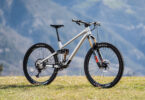The Claymore 2022 is the latest creation of Scottish high-pivot specialist Deviate. Combining a generous 165 mm of travel at the rear and 170 mm at the front, it should be the ideal companion for wild trail sessions and adrenaline-fueled race days. Read the full review to find out whether the exotic Scot managed to impress us!
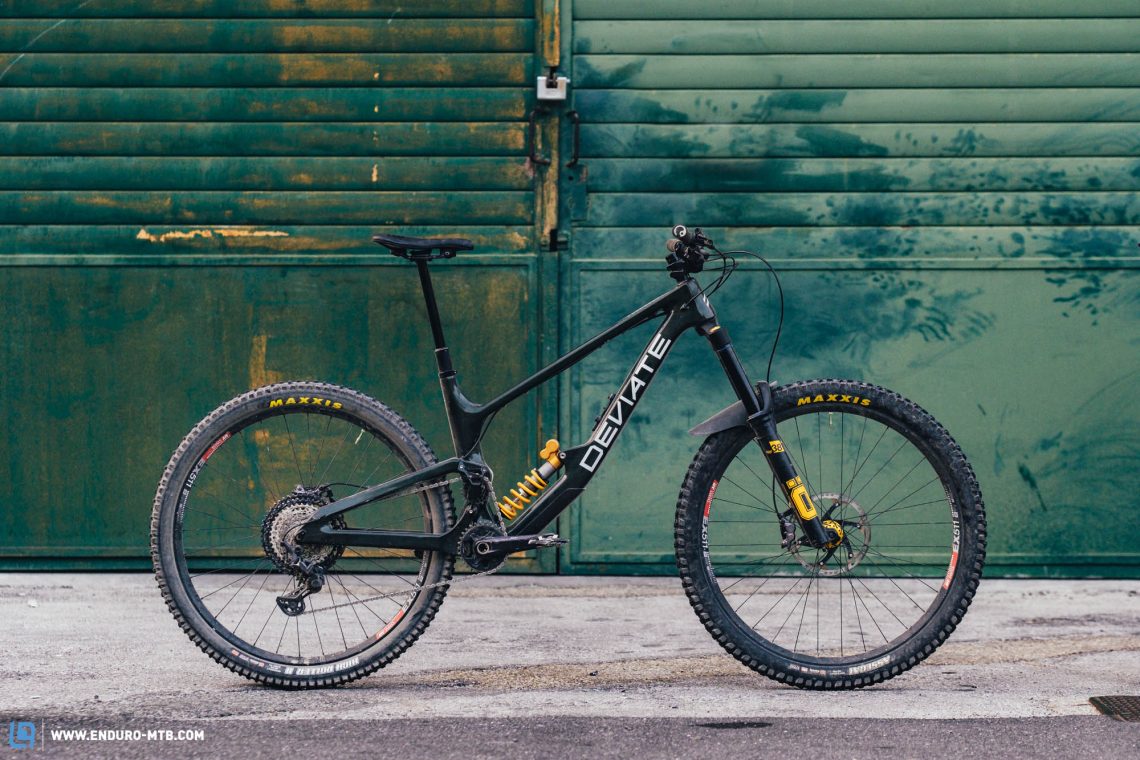
Designed and developed in the heart of the Scottish Highlands, the Claymore is the latest creation of Scottish bike manufacturer Deviate. With its 29” wheels, 170/165 mm travel (f/r) and a generous sprinkle of Deviate’s racing-obsessed company philosophy, the Claymore quickly makes its intentions clear: enduro racing! To squeeze every ounce of performance out of their bikes, Deviate employ a high pivot suspension design – and not just with the Claymore. In fact, the Scots have been exclusively building high pivot bikes since 2016 and were one of the first brands to implement the concept on trail and enduro bikes. In other words, the Scots aren’t just jumping on the trendy high pivot wagon but are actually pioneers of the design.
But what exactly is a high pivot suspension design? Well, the clue’s in the name! With high pivot bikes, the main pivot sits well above the top of the chainring, allowing the rear wheel to swing up and backwards during an impact. This is supposed to ensure a smoother ride and provide a flying carpet feel. However, as the suspension compresses, the rearward axle path inevitably causes the rear centre to grow, resulting in wheelbase and chainstay growth. As a result, the chain pulls on the cranks, causing nasty pedal kickback. That’s where the chain idler pulley on the seat tube comes into play, minimising pedal kickback and giving high-pivot bikes their characteristic look.
The exotic Claymore is still a rare sight and will definitely get you noticed on the trail. By the way, the name wasn’t picked randomly: in Scottish mythology, a claymore was a large two-handed sword historically used by Scottish Highlanders in the late Medieval and early modern periods, and thus a symbol of strength and martial prowess. We tested the Deviate Claymore to find out whether it’s as brutal as its namesake or rather a blunt butter knife.

The Deviate Claymore 2022 in detail
The frame silhouette of the Deviate Claymore is harmonious and organic. Both the main frame triangle and the swingarm are made of carbon, only the shock link is made of alloy. The shock is integrated deep into the frame, nestled against the down tube. The “Green Moss” finish is strongly reminiscent of the legendary British Racing Green, but if you aren’t too fond of green, the Claymore is also available in “Rowan Red”.
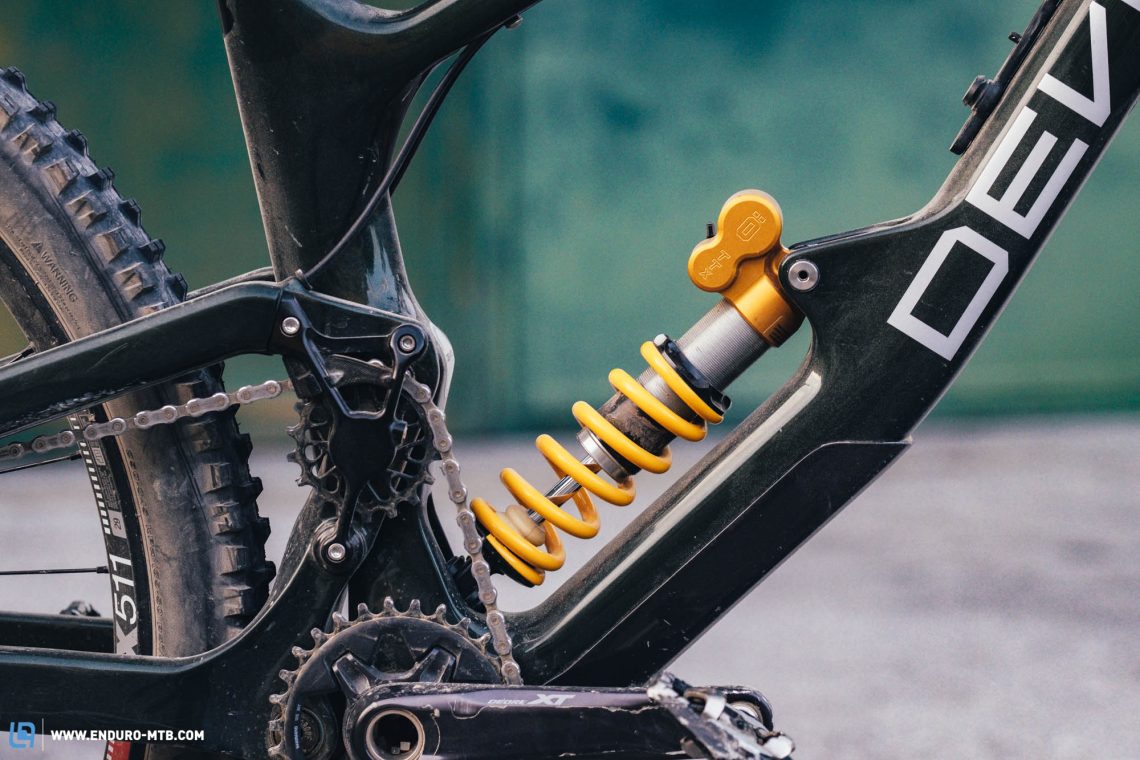
The alloy bracket supporting the 18 t idler is lovingly and neatly integrated into the frame and fits well into the overall picture. Although most cables are routed externally, the Claymore looks clean and tidy. Both the rear derailleur cable and rear brake hose are tucked away inside a recess in the top tube and routed internally through the seat stays to their respective exit ports. As a result, the cables are hardly noticeable and yet easily accessible, making servicing a lot easier. The dropper post cable is routed internally through the main frame, but rattles loudly on the trail. As a practical feature, the four cable clamp bosses under the top tube double as a tool mount, allowing you to stow away trail essentials like a minitool, spare inner tube, CO2 cartridge or a pump directly on the bike without having to carry a backpack or hip pack. A TPU protector at the bottom of the drive-side seat stay reduces chain slap and paint chips and is integrated so discreetly that you only notice it upon closer inspection. While our test bike was relatively quiet, except for the rattle of the dropper cable inside the frame, the chain has already damaged the paint, so we recommend complementing the protector with a generous portion of mastic tape. A generously sized, bolted downtube protector shields the frame of the Claymore from stray rocks and nasty impacts.
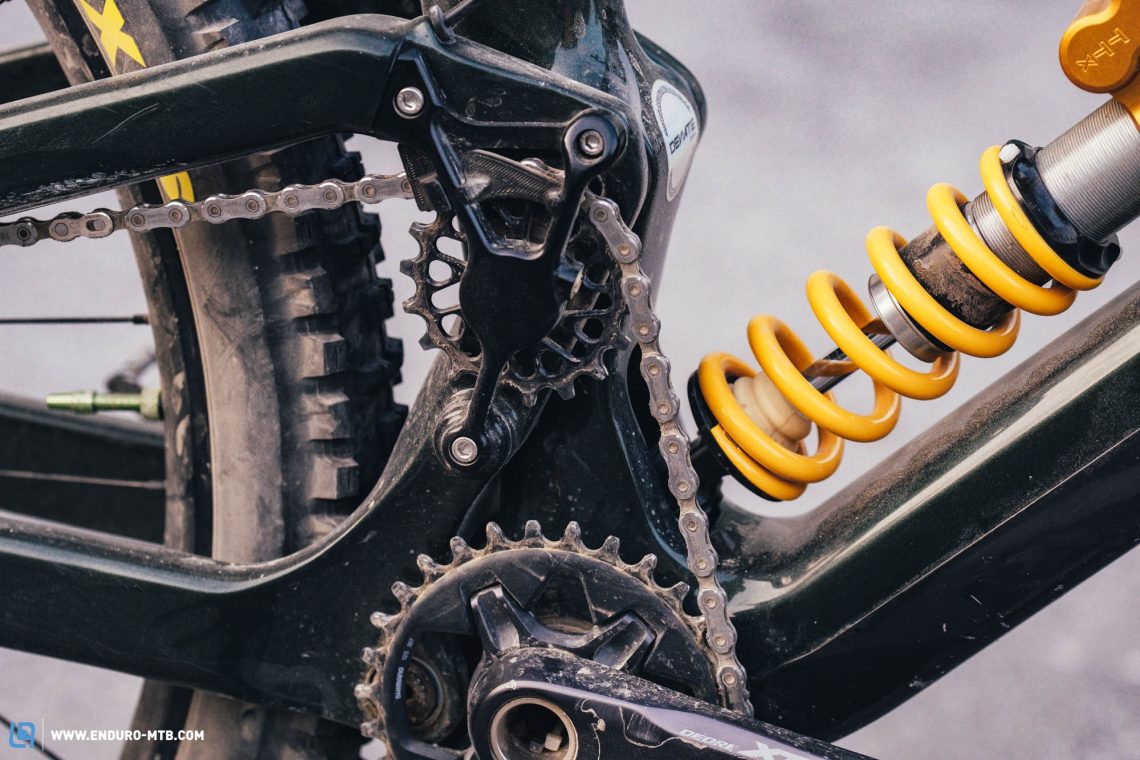
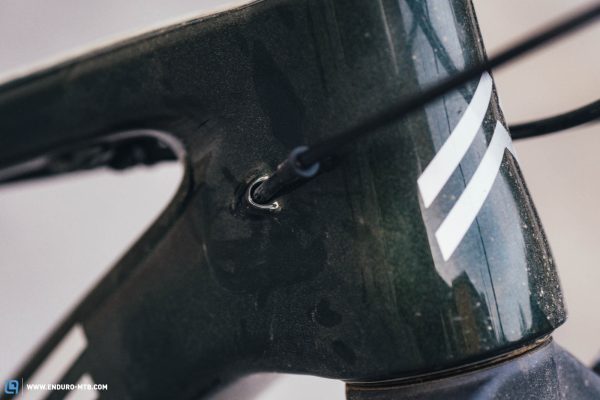

How to get your Deviate Claymore
You can order the Claymore frameset directly from Deviate’s website for € 3,600. Once you’ve selected the frame size and colour, you can choose from different air and coil shock options for an additional charge. If you’re thinking of buying a complete bike, you might be disappointed, because Deviate do things slightly differently. Using their online bike builder, you can choose from a wide range of components and build your dream bike. Unlike other manufacturers, however, Deviate’s configurator doesn’t allow you to order the bike directly from the website. Instead, they’ll forward the desired configuration to your nearest authorised Deviate dealer, who will then send you a final quote or suggest changes in case some of the parts you chose aren’t available. Simply put, complete bikes are sold by a dealer rather than Deviate directly. On one hand, this means that you can’t order your bike quickly and directly from the manufacturer, but on the other, it means that you’ll have all the advantages that come from buying a bike from a local dealer.
The spec of our Deviate Claymore 2022 test bikes
For this test, Deviate provided us with a custom build that reflects their idea of optimal spec, which is trimmed uncompromisingly for downhill performance, tipping the scales at 16.4 kg (size L). Swedish suspension manufacturer Öhlins supplies the 170 mm RXF38 M.2 fork, which features beefy 38 mm stanchions and two self-equalising air chambers in the main spring. As usual, the spring rate can be changed by altering the pressure in the main chamber, while the progression can be changed by increasing and decreasing pressure in the ramp-up chamber. This allows you to adjust the progression of the fork infinitely without having to use volume spacers. The fork is complemented by a matching Öhlins TTX 22 M coil shock, which controls 165 mm travel at the rear and allows you to adjust both the high speed and low speed compression as well as the rebound without the need of tools. If you decide to spec your Claymore with a coil shock, you’ll have to select a suitable spring rate from the scroll down menu. If in doubt, just drop Deviate’s customer support an email and they’ll be more than happy to recommend a suitable spring rate.


Shifting and braking is taken care of entirely by Shimano components. A 12-speed XT drivetrain ensures smooth and precise shifting while the practical Multi Release system of the XT shifter allows you to shift down two gears at the time – and four up! Four piston XT brakes with 200 mm rotors front and rear do stopping duties, providing powerful and reliable deceleration – exactly what an enduro bruiser needs! OneUp Components supply the dropper post and cockpit, which consists of a 45 mm stem and 800 mm carbon handlebars. And here is some good news for long-legged riders: the OneUp Dropper Post V2 offers a whopping 210 mm travel and can be fully inserted into the frame of the Claymore, ensuring a comfortable climbing position and plenty of freedom of movement on the trail.


For the wheelset, Deviate choose robustness over weight, combining a DT Swiss EX 511 29″ alloy rim with Industry Nine Hydra hubs. Alloy rims can take a beating and, unlike carbon rims, don’t land straight in the bin when damaged. MAXXIS supply the ASSEGAI front tire with EXO+ casing and HighRoller II rear tire with robust DoubleDown casing at the rear, both in the harder MaxxTerra rubber compound. While the latter makes sense at the rear, ensuring a longer service life and lower rolling resistance, the front wheel could do with a grippier softer MaxxGrip compound. For added peace of mind, Deviate delivered our test bike with a Cush Core tire insert front and rear. Not only does the insert protect the rims against nasty impacts, but also improves damping qualities and prevents the tires from folding in corners. That’s a cool little touch, but we would choose a more robust tire with a tougher casing over a tire insert, both front and rear.

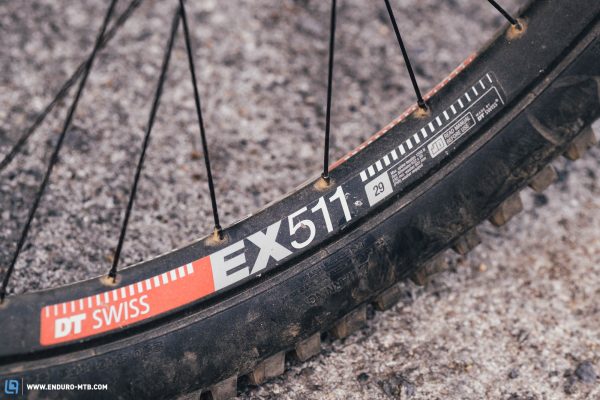
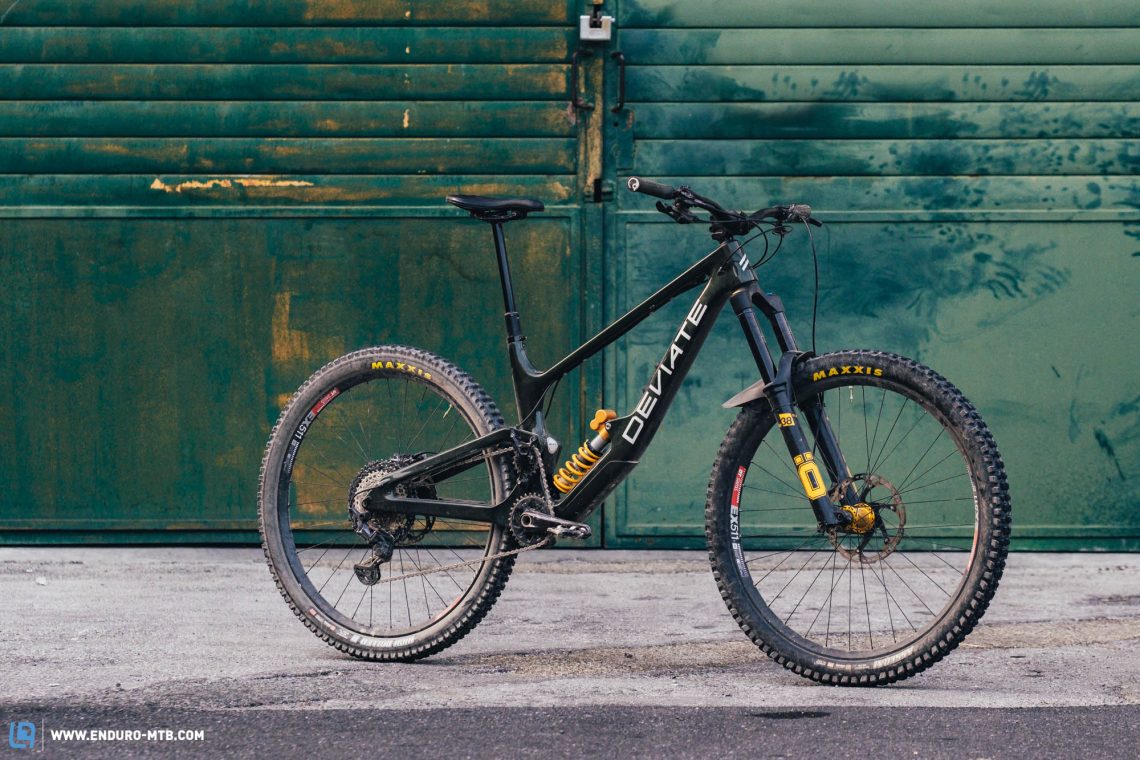
Deviate Claymore (frame only)
€ 3,600
Specifications
Fork Öhlins RXF 38 M.2 170 mm
Rear Shock Öhlins TTX 22 M 165 mm
Seatpost OneUp Dropper Post V2 210 mm
Brakes Shimano XT 200/200 mm
Drivetrain Shimano XT 1x12
Stem OneUp Stem 42 mm
Handlebar OneUp Carbon 800 mm
Wheelset DT Swiss EX511/ Industry Nine Hydra 29"
Tires MAXXIS ASSEGAI MaxxTerra EXO+/MAXXIS HighRoller II MaxxTerra DoubleDown
Technical Data
Size M L XL
Weight 16.4 kg
Specific Features
Tool Mount
The geometry of the Deviate Claymore 2022
The Deviate Claymore is only available in three sizes, M to XL, with reach values growing from 460 mm (M) to 520 mm (XL) in 30 mm increments. As a result, the Claymore is on the long side, but not massive. The steps between the three sizes are rather big, so it’s easy to find yourself on the fence between two sizes. Deviate combine a rather steep 64.3° head angle with 441 mm chainstays, which are consistent across the board. Particularly striking is the short seat tube, which provides plenty of freedom of movement on the trail.
| Size | M | L | XL |
|---|---|---|---|
| Top tube | 592 mm | 622 mm | 656 mm |
| Seat tube | 410 mm | 430 mm | 450 mm |
| Head tube | 92 mm | 108 mm | 114 mm |
| Head angle | 64.3° | 64.3° | 64.3° |
| Seat angle | 78° | 78° | 78° |
| BB Drop | 30 mm | 30 mm | 30 mm |
| Chainstay | 441 mm | 441 mm | 441 mm |
| Wheelbase | 1.235 mm | 1.268 mm | 1.303 mm |
| Reach | 460 mm | 490 mm | 520 mm |
| Stack | 620 mm | 630 mm | 640 mm |
Deviate Claymore 2022 – First riding impressions
We had the opportunity to test the Deviate Claymore over several weeks and put it through the wringer on a trip to Finale Ligure and several other places. The Claymore delivers a pretty solid climbing performance but won’t get you any Strava KOMs uphill. On long, steep climbs, we would have liked to be able to lock out the rear suspension. The pedalling position is comfortable and integrates you deeply into the bike, making it easy to shift your weight forward on steep ramps.

As soon as you point its nose downhill, the first thing you’ll notice is that you don’t notice much at all: the high-pivot rear suspension works discreetly in the background, responding sensitively and always feeling predictable. The chainstay growth is quite linear as the suspension compresses, ensuring consistent handling as the bike moves through its travel.. Compared to other high-pivot bikes like the Norco Range and Cannondale Jekyll, the wheelbase doesn’t grow as dramatically, meaning that the Claymore strikes an excellent balance between agility and composure – which is exactly what the high-pivot suspension design aims to achieve.
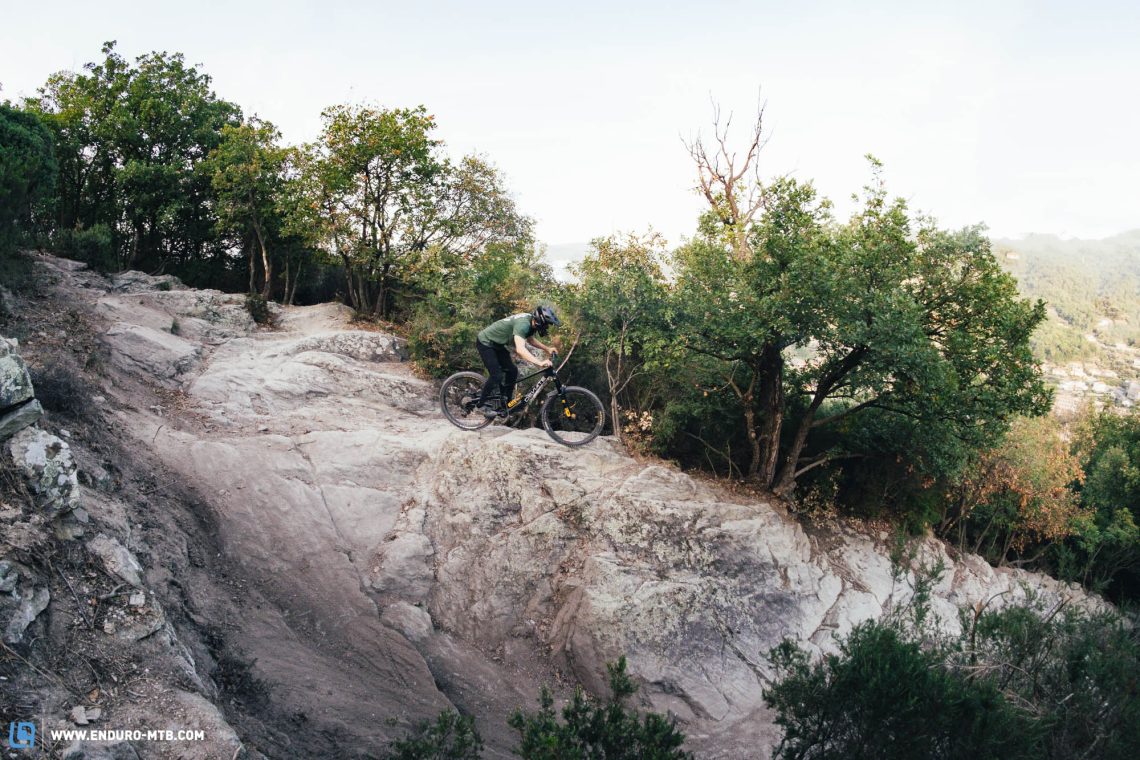
The suspension provides a good compromise between traction and composure, meaning that the Claymore doesn’t sink into its travel but doesn’t feel overly stiff either. As a result, the rear wheel closely follows the contours of the trail, generating tons of traction in all situations. However, generating speed through rollers and berms requires more physical effort, because the suspension of the Claymore swallows up energy when pumping the trail. Handling is rather nimble, allowing you to throw the bike from one corner into the next while at the same time inspiring good amounts of confidence on fast straights. The Deviate Claymore reliably sticks to the chosen line and also forgives smaller riding mistakes, allowing you to redeem yourself with very little effort. However, the Claymore comes to life with an active riding style and quickly makes you a passenger if you don’t live up to its playful character. Needless to say, this makes it a good choice for experienced riders and racers.
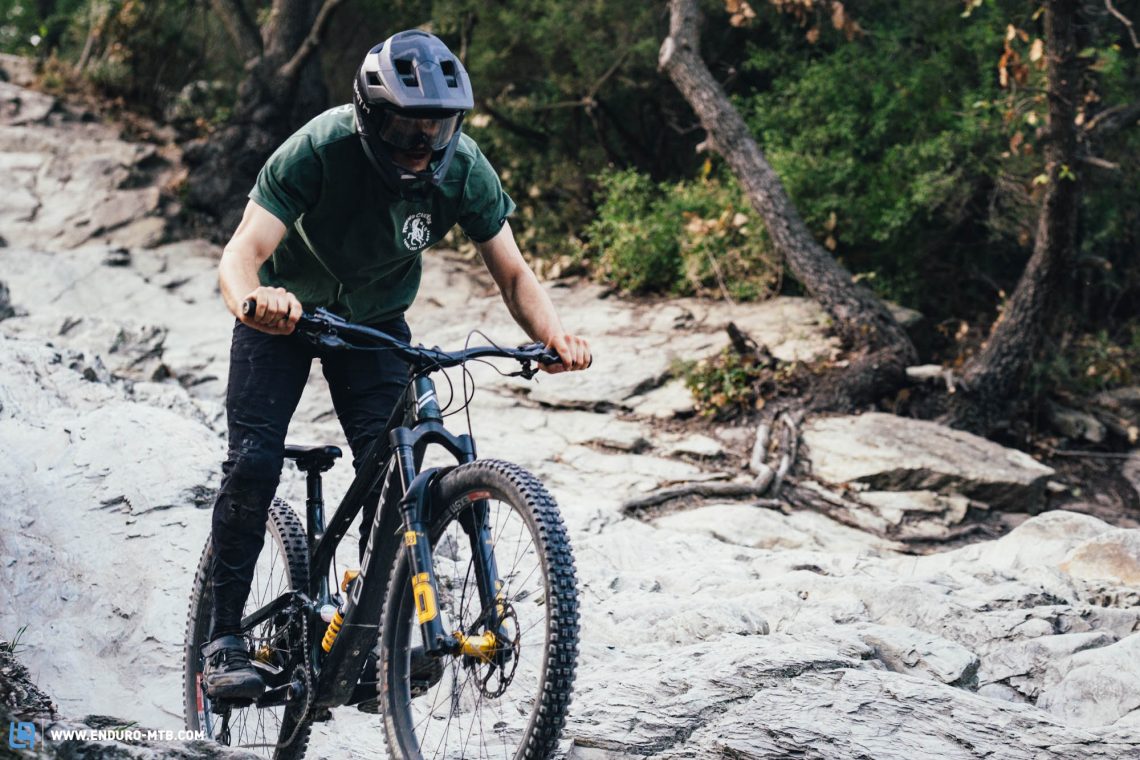
Deviate Claymore 2022 – Our conclusions
With the Claymore, Deviate have consistently and coherently implemented the high pivot concept into a harmonious overall package. Unfortunately, elegant frame details like the alloy bracket around the idler are overshadowed by the loud rattling noise and undersized seat stay protector. On the trail, the Scottish high pivot bruiser strikes an excellent balance between agility and composure – provided you know what you’re doing! All in all, the Claymore is a versatile enduro bike that manages to be both a brutal sword and fine blade.
Tops
- Elegant frame with well-thought-out chain idler
- Excellent balance between Agility and composure
- Sensitive response
Flops
- Dropper post cable rattles loudly
- Not a bike for beginners
For more information, visit Deviate webpage.
Did you enjoy this article? If so, we would be stoked if you decide to support us with a monthly contribution. By becoming a supporter of ENDURO, you will help secure a sustainable future for high-quality mountain bike journalism. Click here to learn more.
Words: Felix Rauch Photos: Sina Meissner, Mike Hunger





